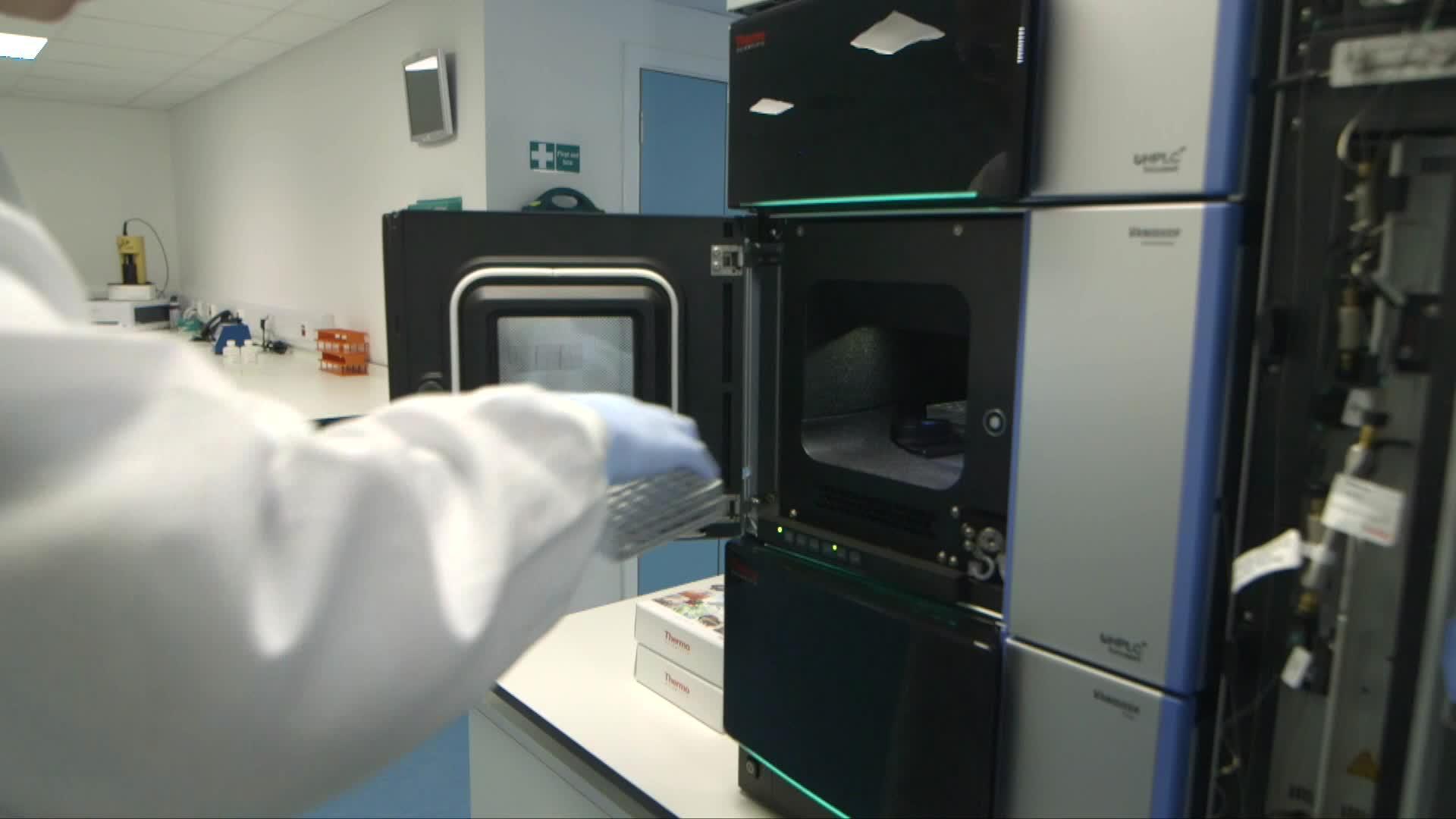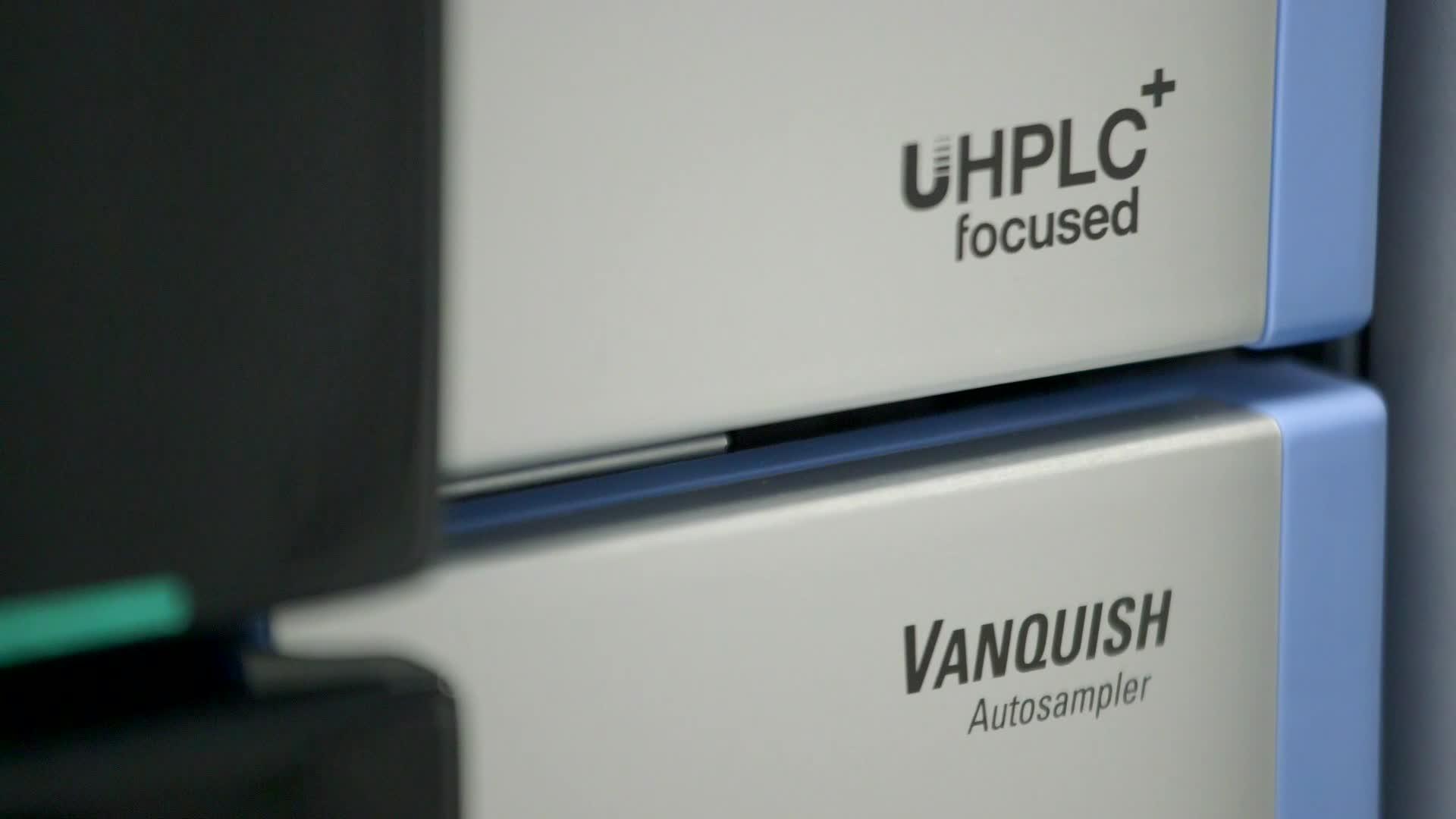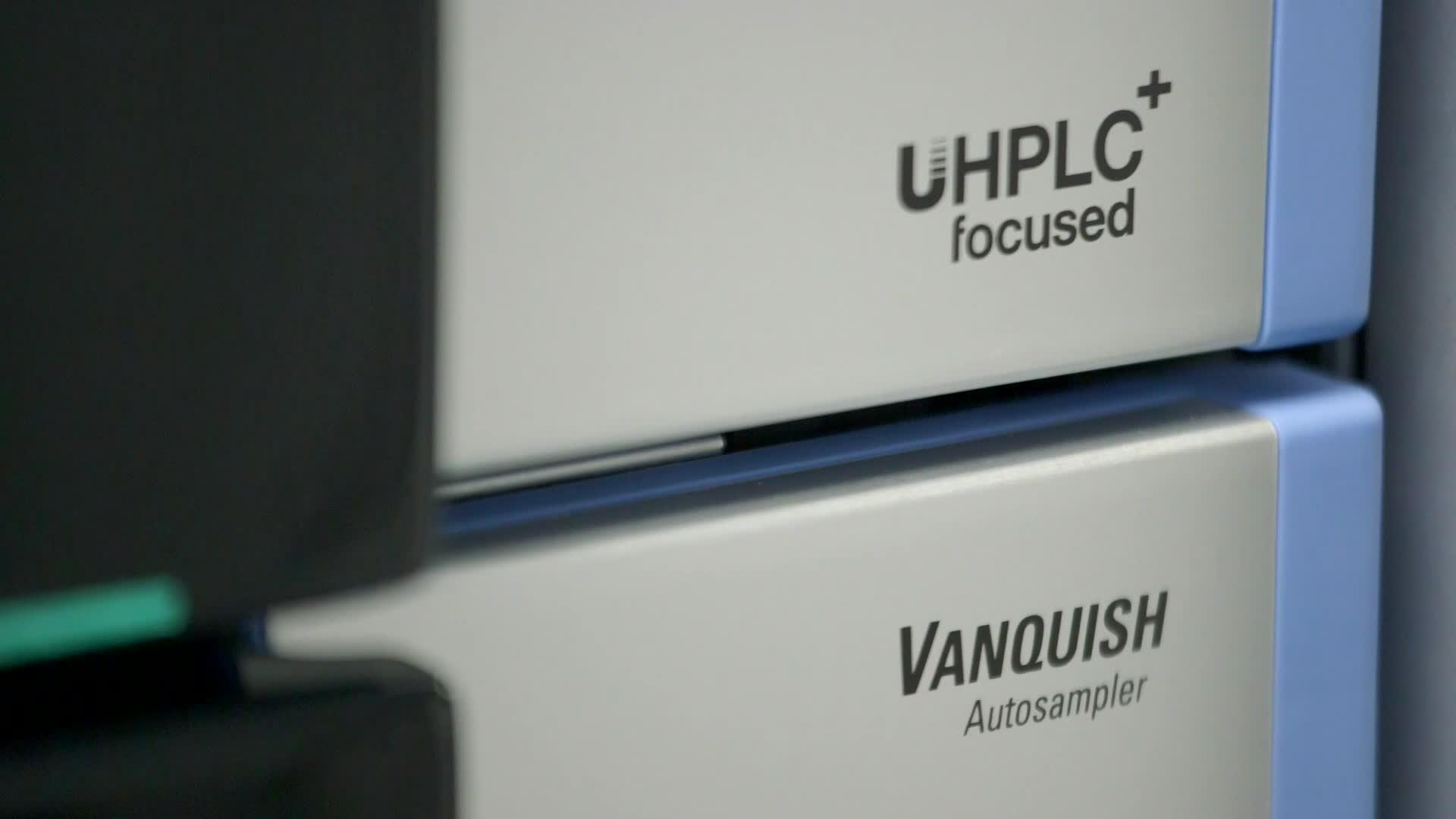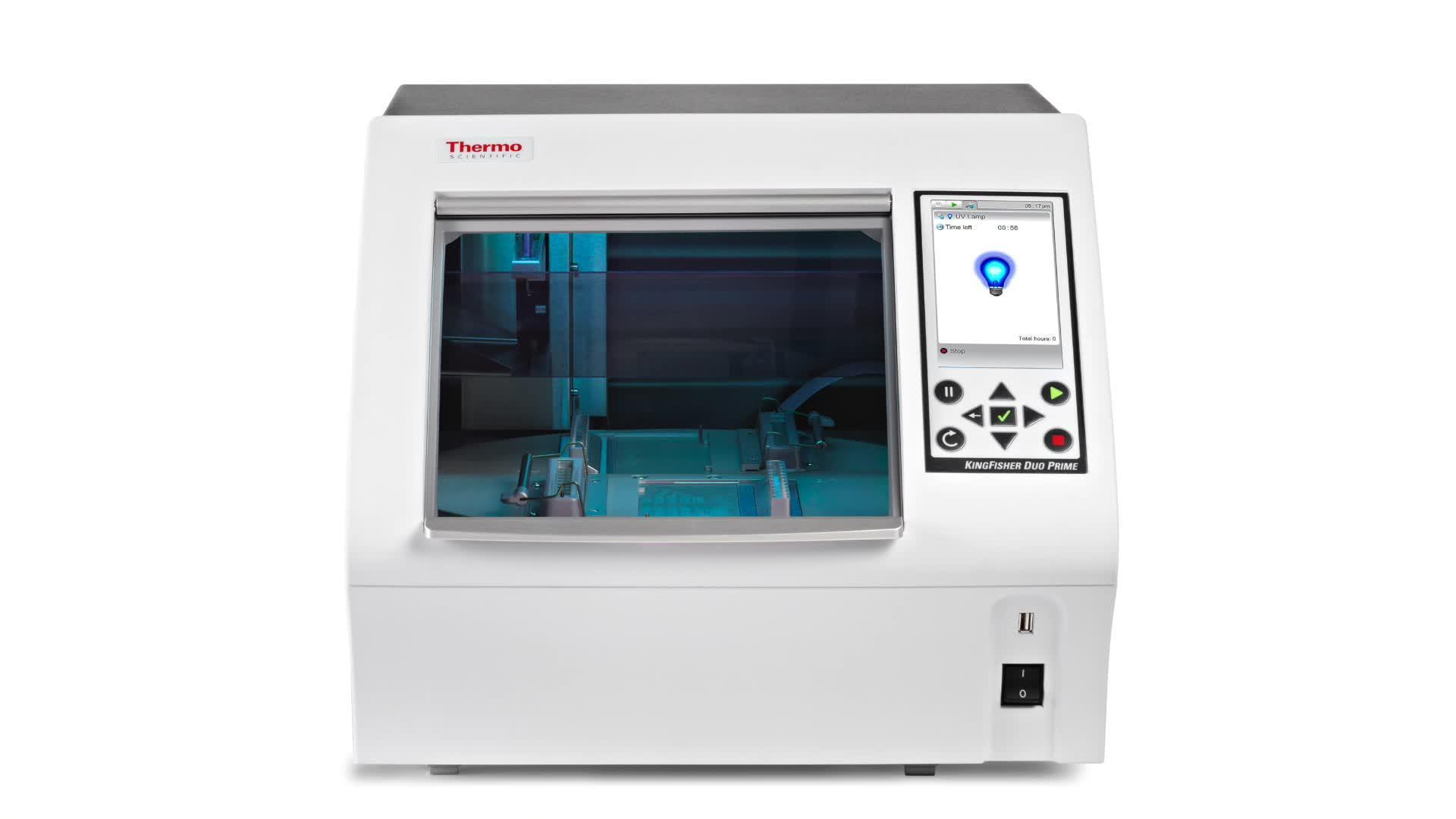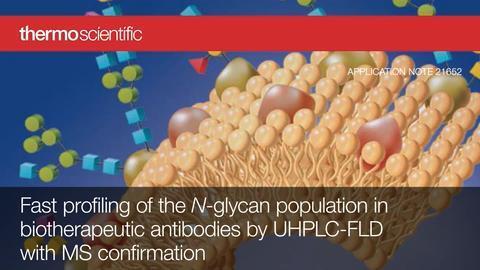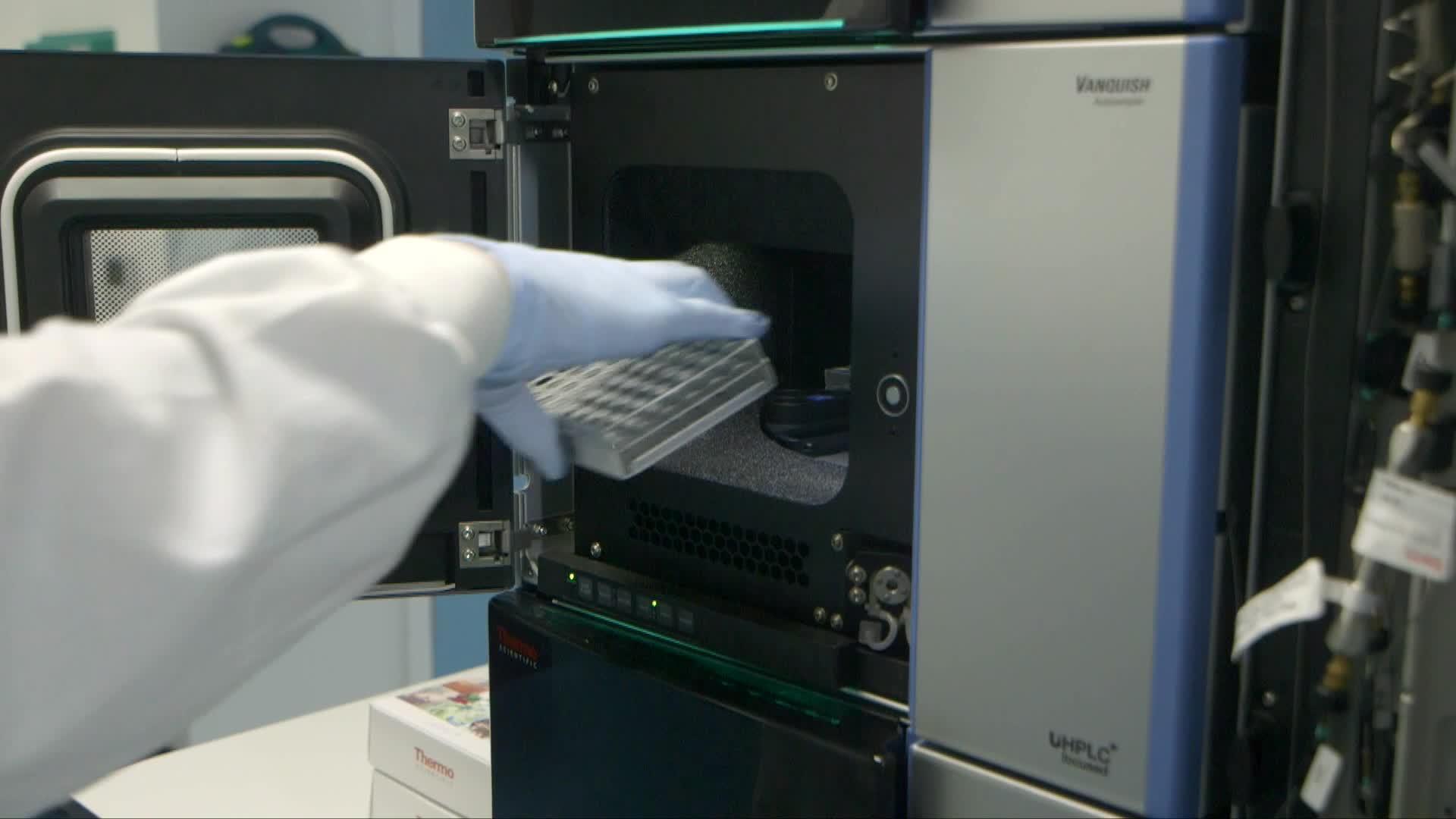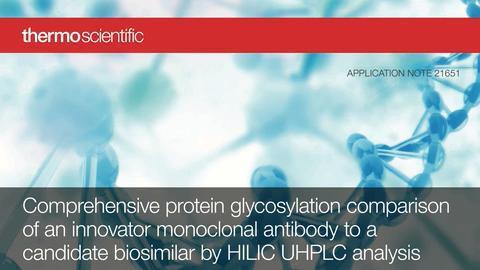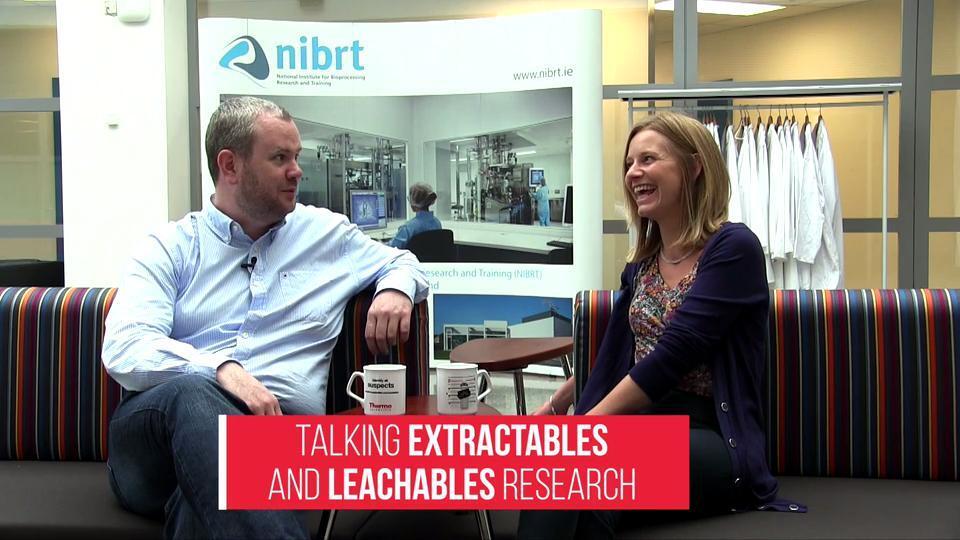Search Thermo Fisher Scientific
NIBRT Collaboration Information

A collaboration built for Biopharma
The National Institute for Bioprocessing Research and Training (NIBRT ) is a world-class institute based near Dublin in Ireland, providing training and research solutions for the bioprocessing industry. In 2016 a collaboration was established between NIBRT and Thermo Fisher Scientific to:
- Enhance structural knowledge
- Ensure drug safety and quality
- Accelerate manufacturing innovations
- Deepen cellular understanding
Protein charge variant profiling
A simple pH gradient/ion-exchange chromatography workflow approach for the characterization of charge variants in monoclonal antibodies using the NISTmAb reference standard.

Evaluation and application of salt and pH-based ion-exchange chromatography gradients for analysis of therapeutic monoclonal antibodies
Demonstrating a simple, easily prepared pH buffer system capable of charge variant determination for the majority of therapeutic monoclonal antibody species. Showing the ease of optimization and improved reproducibility of the CX-1 pH gradient buffer system when compared to salt-based gradient systems used for charge variant analysis.

Simple charge variant profile comparison of an innovator monoclonal antibody and a biosimilar candidate
Demonstrating the effectiveness of a simple pH gradient/ion-exchange chromatography workflow approach to the characterization of the different charge variant profiles of an innovator molecule (Cetuximab) and a candidate biosimilar. The assay is simple, reproducible, easily optimized and resolves variants effectively.
Protein aggregate analysis

Optimizing protein aggregate analysis by SEC
This article, co-authored by scientists from NIBRT and Thermo Fisher Scientific, presents a robust UHPLC- SEC approach for protein aggregate analysis of five structurally diverse biotherapeutic mAbs (bevacizumab, cetuximab, infliximab, rituximab, and trastuzumab) that employs a silica column with a covalently-bonded diol hydrophilic layer designed to prevent secondary interactions. Pre-column dispersion can be minimized through optimization of instrument tubing and use of appropriate injection volumes.

Lifetime stability of SEC columns for protein aggregate analysis
Demonstrable class-leading MAbPac SEC-1 column lifetime and stability, without the requirement for guard columns.
Peptide mapping
On-demand webinar: Peptide separations with pinpoint precision
Ultimate retention time reproducibility and high resolution peptide separations
Dr Amy Farrell from NIBRT and Dr Mauro De Pra from Thermo Fisher Scientific share the latest innovations in UHPLC for peptide mapping.
Reversed phase liquid chromatography (RPLC) of peptides is routinely used in the biopharmaceutical industry to provide information on the nature and quality of protein therapeutics. In peptide mapping analysis RPLC provides ideal separation of peptides in combination with UV or MS detection. This webinar details a purpose-built UHPLC system for biopharmaceutical characterization, with a comprehensive how-to guide for optimising UHPLC for peptide mapping. From the webinar you will be provided with all the information necessary to develop the ideal UHPLC method for mapping your life changing biologic.
Automated peptide mapping for monoclonal antibodies

An automated high-throughput workflow for peptide mapping to monitor post-translational modifications (PTMs) of monoclonal antibodies
Automated high-throughput trypsin digestion for highly reproducible peptide mapping of five top-selling monoclonal antibodies (chimeric, humanized and fully human). The study focused on reproducibility, protein sequence coverage, and identification of post-translational modifications (PTMs), including deamidation, oxidation, N-terminal pyroglutamination, C-terminal lysine loss, glycation, and glycosylation.

Comparison of alternative approaches to trypsin protein digestion for reproducible and efficient peptide mapping analysis of monoclonal antibodies.
Comparing peptide mapping data acquired using the SMART Digest kit and the SMART Digest Trypsin kit, Magnetic Bulk Resin option, to those obtained by alternative digestion methods including an in-solution protocol and a rapid protein digestion method. The study focused on reproducibility, protein sequence coverage and identification of post-translational modifications (PTMs), including deamidation and oxidation.
Posttranslational modification determination of biotherapeutic drugs and their biosmimilars

Comparability study investigating Rituximab and Trastuzumab innovator and biosimilar drug products
Peptide mapping study to evaluate the similarity of post-translational modifications (PTMs) detected in Rituximab and Trastuzumab drug products and their respective biosimilars.
Rapid, automated sample preparation within one hour leading to highly reproducible results for innovator and biosimilar comparability studies, with less hands-on time. Simple protein digestion with minimal user intervention while achieving high confidence in results with excellent data quality; approximately 100% sequence coverage and low levels of sample preparation induced post-translational modifications.

Comparability study investigating Infliximab innovator and biosimilar drug products
A study to evaluate the use of the Thermo Scientific™ SMART Digest™ Trypsin Kit, with Magnetic Bulk Resin option (Magnetic SMART Digest), protocol in combination with the Thermo Scientific™ KingFisher™ Duo Prime purification system to investigate PTMs in the innovator and biosimilar drug substances. The efficiency and reproducibility of the platform was evaluated with a specific focus on the determination of protein sequence coverage and identification of post-translational modifications (PTMs), including deamidation, oxidation, lysine clipping, glycation, and glycosylation.
Glycan analysis
A widely applicable UHPLC approach to fast, comprehensive profiling of 2-AA and 2-AB labeled glycans in IgG antibodies.
A high-throughput screening method for unambiguous identification of glycoforms with 20 x reduction in separation time compared to standard profiling methods.
Process Analytical Technology (PAT) for bioprocessing
On-demand webinar: Innovative Analytical Strategies for Monitoring Critical Process Parameters and Critical Quality Attributes (CQA)

Biopharmaceuticals are complex molecules produced by living cells, with strict control of bioprocessing being required to ensure the production of high-quality therapeutic proteins.
A key desire by biopharmaceutical manufacturers is PAT for process monitoring and rapid analytical information generation.
Mass spectrometry (MS) coupled to liquid-phase separations offers immense potential for implementation as an online characterization tool, providing a wealth of multi-attribute information at all stages throughout the bioprocess with greater confidence and depth of product attribute knowledge, improving safety and potency.
In this on-demand webinar hear Dr Jonathan Bones of NIBRT and Dr Michael Blank of Thermo Fisher Scientific present an overview of the current state of bioprocessing monitoring, discuss areas for improvement and implementation of PAT, and describe the potential of cGMP-compliant MS characterization throughout bioprocess and lot release.
Is high resolution mass spectrometry the missing piece in continuous bioproduction?

In line with quality‐by‐design (QbD) and the desire for continuous manufacture and real‐time lot release, biopharmaceutical manufacturers require advanced PAT for process monitoring and rapid analytical information generation.
High resolution LC‐MS is growing in popularity based on its ability to efficiently offer a wealth of multi‐attribute information which can be used to optimise manufacture and improve drug safety and efficacy.
In this article, co-authored by NIBRT and Thermo Fisher Scientific, the barriers to the adoption of LC‐MS in an online environment are discussed along with recent advances, including the potential application of cGMP‐compliant MS characterization throughout bioprocess and lot release.
Leveraging Platform Analytical Methods for Biopharma QbD
Monoclonal antibody (mAb) CQAs are monitored throughout drug development, manufacture and lot release. While each mAb therapeutic is clearly unique in its targeting and activity, the physicochemical properties of mAbs can often be described within relatively narrow ranges.
A key aspect of biopharmaceutical QbD, which is yet to be truly leveraged, is the use of so-called “platform” strategies for CQA determination. This article will explore the importance of HPLC in mAb CQA determination and monitoring, the benefits of implementing well-developed platform mAb HPLC methods and their potential scope and application.
Extractables and leachables
Ground-breaking research in single-use bioprocess technologies
NIBRT have embarked on what is believed to be the largest public research project to date focused on migration of leachable impurities from bioprocess materials. The report should become available in 2018, dependent on peer-review publication schedule, and you can register to receive a copy of this important report once it is available.
To develop this report, NIBRT collaborated with:
- Thermo Fisher Scientific
- Allergan Pharmaceuticals Ireland
- BioMarin International Ltd.
- Eli Lilly and Company
- Genzyme Ireland Ltd
- Janssen Biologics
- MSD
- Pfizer Ireland Pharmaceuticals
The project investigated bioprocess films from 5 vendors of single-use bioprocess bags.
Four extractable solvent model systems were used, plus a simulated leachable study using cell culture media. >1500 sample analyses were performed using headspace GC-MS, GC-MS/MS, LC-MS/MS and ICP-MS.
Intact & Subunit Mass
Simple, Robust, High Quality Intact Mass Analysis—A Biosimilars Case Study
The NIBRT in Ireland is unique in supporting the bioprocessing industry. They provide learning in a facility that replicates modern industrial bioprocessing. In parallel, they conduct cutting-edge research in key areas of bioprocessing in collaboration with industry, looking at analytical solutions to help drug product development, manufacture, and characterization.
Read about the solution for intact large protein analysis of monoclonal antibodies that they found to be both fast and powerful.
Protein charge variant profiling
A simple pH gradient/ion-exchange chromatography workflow approach for the characterization of charge variants in monoclonal antibodies using the NISTmAb reference standard.

Evaluation and application of salt and pH-based ion-exchange chromatography gradients for analysis of therapeutic monoclonal antibodies
Demonstrating a simple, easily prepared pH buffer system capable of charge variant determination for the majority of therapeutic monoclonal antibody species. Showing the ease of optimization and improved reproducibility of the CX-1 pH gradient buffer system when compared to salt-based gradient systems used for charge variant analysis.

Simple charge variant profile comparison of an innovator monoclonal antibody and a biosimilar candidate
Demonstrating the effectiveness of a simple pH gradient/ion-exchange chromatography workflow approach to the characterization of the different charge variant profiles of an innovator molecule (Cetuximab) and a candidate biosimilar. The assay is simple, reproducible, easily optimized and resolves variants effectively.
Protein aggregate analysis

Optimizing protein aggregate analysis by SEC
This article, co-authored by scientists from NIBRT and Thermo Fisher Scientific, presents a robust UHPLC- SEC approach for protein aggregate analysis of five structurally diverse biotherapeutic mAbs (bevacizumab, cetuximab, infliximab, rituximab, and trastuzumab) that employs a silica column with a covalently-bonded diol hydrophilic layer designed to prevent secondary interactions. Pre-column dispersion can be minimized through optimization of instrument tubing and use of appropriate injection volumes.

Lifetime stability of SEC columns for protein aggregate analysis
Demonstrable class-leading MAbPac SEC-1 column lifetime and stability, without the requirement for guard columns.
Peptide mapping
On-demand webinar: Peptide separations with pinpoint precision
Ultimate retention time reproducibility and high resolution peptide separations
Dr Amy Farrell from NIBRT and Dr Mauro De Pra from Thermo Fisher Scientific share the latest innovations in UHPLC for peptide mapping.
Reversed phase liquid chromatography (RPLC) of peptides is routinely used in the biopharmaceutical industry to provide information on the nature and quality of protein therapeutics. In peptide mapping analysis RPLC provides ideal separation of peptides in combination with UV or MS detection. This webinar details a purpose-built UHPLC system for biopharmaceutical characterization, with a comprehensive how-to guide for optimising UHPLC for peptide mapping. From the webinar you will be provided with all the information necessary to develop the ideal UHPLC method for mapping your life changing biologic.
Automated peptide mapping for monoclonal antibodies

An automated high-throughput workflow for peptide mapping to monitor post-translational modifications (PTMs) of monoclonal antibodies
Automated high-throughput trypsin digestion for highly reproducible peptide mapping of five top-selling monoclonal antibodies (chimeric, humanized and fully human). The study focused on reproducibility, protein sequence coverage, and identification of post-translational modifications (PTMs), including deamidation, oxidation, N-terminal pyroglutamination, C-terminal lysine loss, glycation, and glycosylation.

Comparison of alternative approaches to trypsin protein digestion for reproducible and efficient peptide mapping analysis of monoclonal antibodies.
Comparing peptide mapping data acquired using the SMART Digest kit and the SMART Digest Trypsin kit, Magnetic Bulk Resin option, to those obtained by alternative digestion methods including an in-solution protocol and a rapid protein digestion method. The study focused on reproducibility, protein sequence coverage and identification of post-translational modifications (PTMs), including deamidation and oxidation.
Posttranslational modification determination of biotherapeutic drugs and their biosmimilars

Comparability study investigating Rituximab and Trastuzumab innovator and biosimilar drug products
Peptide mapping study to evaluate the similarity of post-translational modifications (PTMs) detected in Rituximab and Trastuzumab drug products and their respective biosimilars.
Rapid, automated sample preparation within one hour leading to highly reproducible results for innovator and biosimilar comparability studies, with less hands-on time. Simple protein digestion with minimal user intervention while achieving high confidence in results with excellent data quality; approximately 100% sequence coverage and low levels of sample preparation induced post-translational modifications.

Comparability study investigating Infliximab innovator and biosimilar drug products
A study to evaluate the use of the Thermo Scientific™ SMART Digest™ Trypsin Kit, with Magnetic Bulk Resin option (Magnetic SMART Digest), protocol in combination with the Thermo Scientific™ KingFisher™ Duo Prime purification system to investigate PTMs in the innovator and biosimilar drug substances. The efficiency and reproducibility of the platform was evaluated with a specific focus on the determination of protein sequence coverage and identification of post-translational modifications (PTMs), including deamidation, oxidation, lysine clipping, glycation, and glycosylation.
Glycan analysis
A widely applicable UHPLC approach to fast, comprehensive profiling of 2-AA and 2-AB labeled glycans in IgG antibodies.
A high-throughput screening method for unambiguous identification of glycoforms with 20 x reduction in separation time compared to standard profiling methods.
Process Analytical Technology (PAT) for bioprocessing
On-demand webinar: Innovative Analytical Strategies for Monitoring Critical Process Parameters and Critical Quality Attributes (CQA)

Biopharmaceuticals are complex molecules produced by living cells, with strict control of bioprocessing being required to ensure the production of high-quality therapeutic proteins.
A key desire by biopharmaceutical manufacturers is PAT for process monitoring and rapid analytical information generation.
Mass spectrometry (MS) coupled to liquid-phase separations offers immense potential for implementation as an online characterization tool, providing a wealth of multi-attribute information at all stages throughout the bioprocess with greater confidence and depth of product attribute knowledge, improving safety and potency.
In this on-demand webinar hear Dr Jonathan Bones of NIBRT and Dr Michael Blank of Thermo Fisher Scientific present an overview of the current state of bioprocessing monitoring, discuss areas for improvement and implementation of PAT, and describe the potential of cGMP-compliant MS characterization throughout bioprocess and lot release.
Is high resolution mass spectrometry the missing piece in continuous bioproduction?

In line with quality‐by‐design (QbD) and the desire for continuous manufacture and real‐time lot release, biopharmaceutical manufacturers require advanced PAT for process monitoring and rapid analytical information generation.
High resolution LC‐MS is growing in popularity based on its ability to efficiently offer a wealth of multi‐attribute information which can be used to optimise manufacture and improve drug safety and efficacy.
In this article, co-authored by NIBRT and Thermo Fisher Scientific, the barriers to the adoption of LC‐MS in an online environment are discussed along with recent advances, including the potential application of cGMP‐compliant MS characterization throughout bioprocess and lot release.
Leveraging Platform Analytical Methods for Biopharma QbD
Monoclonal antibody (mAb) CQAs are monitored throughout drug development, manufacture and lot release. While each mAb therapeutic is clearly unique in its targeting and activity, the physicochemical properties of mAbs can often be described within relatively narrow ranges.
A key aspect of biopharmaceutical QbD, which is yet to be truly leveraged, is the use of so-called “platform” strategies for CQA determination. This article will explore the importance of HPLC in mAb CQA determination and monitoring, the benefits of implementing well-developed platform mAb HPLC methods and their potential scope and application.
Extractables and leachables
Ground-breaking research in single-use bioprocess technologies
NIBRT have embarked on what is believed to be the largest public research project to date focused on migration of leachable impurities from bioprocess materials. The report should become available in 2018, dependent on peer-review publication schedule, and you can register to receive a copy of this important report once it is available.
To develop this report, NIBRT collaborated with:
- Thermo Fisher Scientific
- Allergan Pharmaceuticals Ireland
- BioMarin International Ltd.
- Eli Lilly and Company
- Genzyme Ireland Ltd
- Janssen Biologics
- MSD
- Pfizer Ireland Pharmaceuticals
The project investigated bioprocess films from 5 vendors of single-use bioprocess bags.
Four extractable solvent model systems were used, plus a simulated leachable study using cell culture media. >1500 sample analyses were performed using headspace GC-MS, GC-MS/MS, LC-MS/MS and ICP-MS.
Intact & Subunit Mass
Simple, Robust, High Quality Intact Mass Analysis—A Biosimilars Case Study
The NIBRT in Ireland is unique in supporting the bioprocessing industry. They provide learning in a facility that replicates modern industrial bioprocessing. In parallel, they conduct cutting-edge research in key areas of bioprocessing in collaboration with industry, looking at analytical solutions to help drug product development, manufacture, and characterization.
Read about the solution for intact large protein analysis of monoclonal antibodies that they found to be both fast and powerful.
Co-developed analytical workflows and methods are all uploaded to the Thermo Scientific AppsLab Library of Analytical Applications , which is a unique cloud-based applications compendium that enables scientists across the globe to access and download total analytical solutions directly to their own instruments. NIBRT and Thermo Fisher Scientific share a common goal in enabling simplified, faster analysis of complex biologics and the generation of highly informative characterization data.
On-demand webinar series
Complete characterization
Robust and reproducible peptide mapping and intact mass analysis workflows on a single instrument platform
Application of a single LC-MS platform for extensive characterization of biotherapeutic proteins by peptide mapping and intact protein analysis on the recombinant protein somatotropin
Featured videos
Search methods and application notes
No records were found matching your criteria
